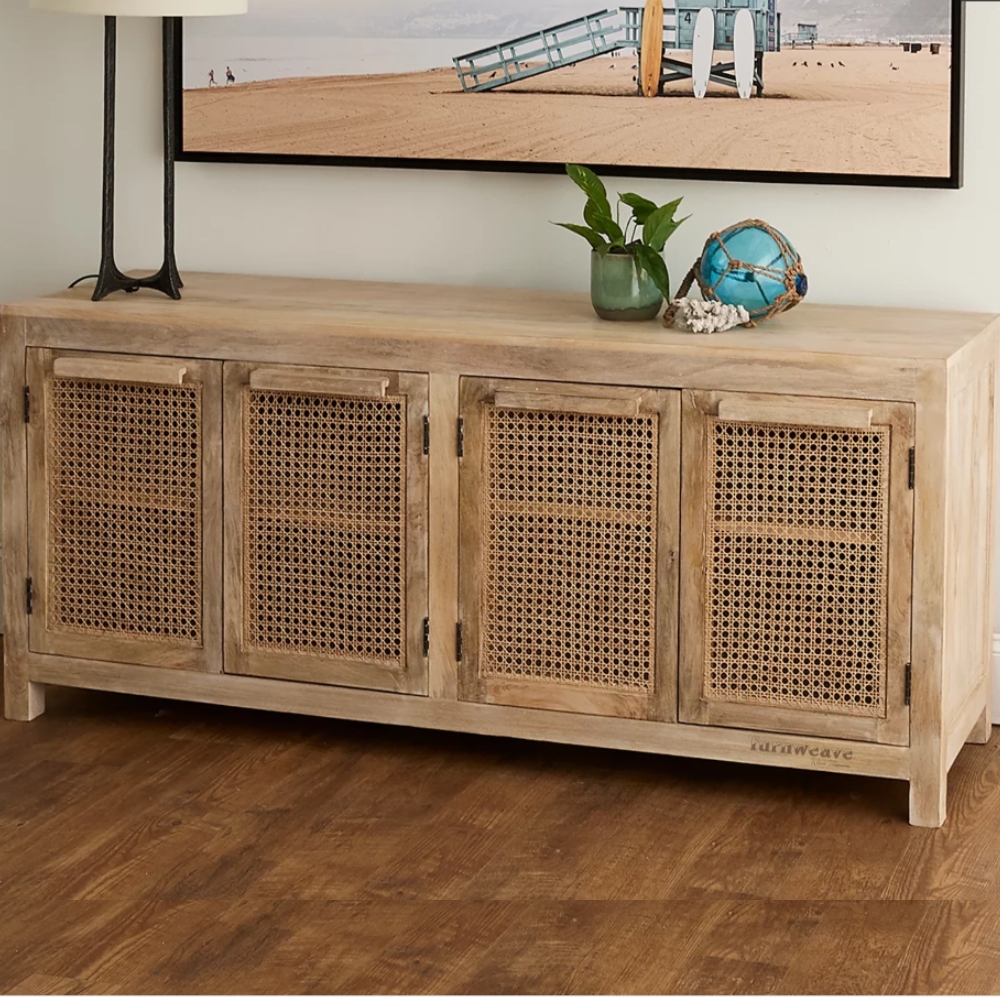The world of furniture is as diverse as it is fascinating. With a plethora of materials and styles to choose from, it can sometimes be a tad overwhelming to differentiate between them, especially when they appear quite similar. Cane, rattan, and woven furniture are three such categories that often get interchanged. However, each has its unique characteristics, origins, and applications. Let’s delve deep into understanding these subtle differences.
The World of Woven Furniture
Woven Furniture in India has a rich legacy, tracing back to ancient civilizations. The term ‘woven’ refers to the technique where two or more materials are interlaced to form a structure. This can be done with a variety of materials, including but not limited to, cane, rattan, jute, or even synthetic fibers. The beauty of Wooden Handwoven Furniture lies in the intricate patterns created by weaving materials around a wooden frame. This results in pieces that are both sturdy and aesthetically pleasing. For instance, the charpai, a traditional woven bed, showcases the finesse of this technique.

Cane Furniture: The Elegant Choice
Cane refers to the stem of a rattan plant. It’s thin, flexible, and has a naturally glossy finish. Cane furniture is made by using the cane to create the outer frame of the furniture and then weaving it to form the body. This results in lightweight, durable, and elegant furniture pieces. The natural glossy finish of cane also means that it requires minimal maintenance, making it a favorite for both indoor and outdoor furniture.
Rattan: Nature’s Gift to Furniture
Rattan is a close relative of the palm tree. It’s a type of climbing plant that grows in the tropical regions of Asia, Africa, and Australasia. Rattan furniture is made from the solid core of the rattan plant, making it more robust and heavier than cane furniture. Its strength and flexibility make it an excellent material for furniture crafting. Rattan can be shaped into intricate designs, and its natural resistance to splintering ensures longevity.

Woven Benches and Their Universal Appeal
Taking a specific example, the Woven Bench is a testament to the versatility of woven furniture. Whether crafted from cane, rattan, or other materials, these benches offer a blend of comfort and style. They can be placed in gardens, patios, or even inside homes, serving as both functional seating and a decorative piece.
Making the Right Choice
When deciding between cane, rattan, or woven furniture, consider the following:
- Durability: Rattan is generally more robust than cane.
- Location: Cane furniture, with its lightweight nature, is often preferred for indoor settings, while rattan, being sturdier, is suitable for both indoor and outdoor.
- Aesthetics: If you’re looking for intricate designs, rattan might be the way to go. For sleek, elegant pieces, consider cane.
- Maintenance: Cane furniture requires minimal upkeep due to its natural glossy finish, while rattan might need occasional maintenance to retain its look.
Cane, rattan, and woven furniture, each bring their unique charm to the table. While they share similarities, understanding their differences can help in making informed decisions when furnishing your space. As the demand for sustainable, eco-friendly furniture rises, these natural materials stand out, offering beauty, durability, and a touch of nature in our homes.
Q 1. What’s the primary difference between cane, rattan, and woven furniture?
While cane refers to the stem of the rattan plant, rattan is the solid core of the plant itself. Woven furniture, on the other hand, encompasses a broader category where materials, including cane and rattan, are interlaced to create structured designs.
Q 2. How do I care for my rattan and cane furniture to ensure longevity?
Regular dusting, avoiding prolonged exposure to direct sunlight, and occasional cleaning with a damp cloth can help maintain the furniture. For rattan, periodic checks for splintering and resealing can extend its life.
Q 3. Is woven furniture suitable for outdoor use?
While some woven furniture, especially those made from synthetic materials or treated natural materials, can be used outdoors, it’s essential to check the manufacturer’s guidelines. Rattan, being sturdier, is often suitable for both indoor and outdoor settings.
Q 4. Why is cane furniture often glossier than other types?
Cane naturally has a glossy finish, which not only adds to its aesthetic appeal but also means it requires minimal maintenance compared to other materials.